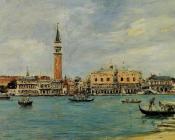杰拉德·特·博尔奇
Gerard Ter Borch
荷兰画家 1617-1681 , 所有杰拉德·特·博尔奇的作品
杰拉德·特·博尔奇(或特尔堡)(1617年12月到1681年12月8)是荷兰风俗画家,他生活在荷兰的黄金时代。博尔奇出生于1617年12月在荷兰共和国上艾瑟尔省(the province of Overijssel)的兹沃勒(Zwolle)。
他受到父亲的良好教育,他的父亲也是一个画家并且很早就才华横益。在一个研究的碑文的前部份就证明1632年博尔奇在阿姆斯特丹,在那里他可能在威廉·科内利斯·Duyster(Willem Cornelisz Duyster)或彼得·柯德(Pieter Codde)的指导下做研究。Duyster's influence can be traced in a picture bearing the date 1638, in the lonides Bequest (Victoria and Albert Museum). In 1634 he studied under Pieter de Molijn in Haarlem. A record of this Haarlem period is the Consultation (1635) at the Berlin Gallery.
In 1635 he was in London, and subsequently he travelled in Germany, France, Spain and Italy. It is certain that he was in Rome in 1641, when he painted the small portraits on copper of Jan Six and A Young Lady (Six Collection, Amsterdam). In 1648 he was at Münster during the meeting of the congress which ratified the treaty of peace between the Spaniards and the Dutch, and executed his celebrated little picture, painted upon copper, of the assembled plenipotentiaries--a work which, along with the a portrait of a Man Standing, now represents the master in the national collection in London. The picture was bought by the marquess of Hertford at the Demidoff sale for 1280, and presented to the National Gallery by Sir Richard Wallace, at the suggestion of his secretary, Sir John Murray Scott. At this time Ter Borch was invited to visit Madrid, where he received employment and the honour of knighthood from Philip IV, but, in consequence of an intrigue, it is said, he was obliged to return to the Netherlands. He seems to have resided for a time in Haarlem; but he finally settled in Deventer, where he became a member of the town council, as which he appears in the portrait now in the gallery of the Hague. He died at Deventer in 1681.杰拉德特博尔奇 - Gerard Ter Borch










